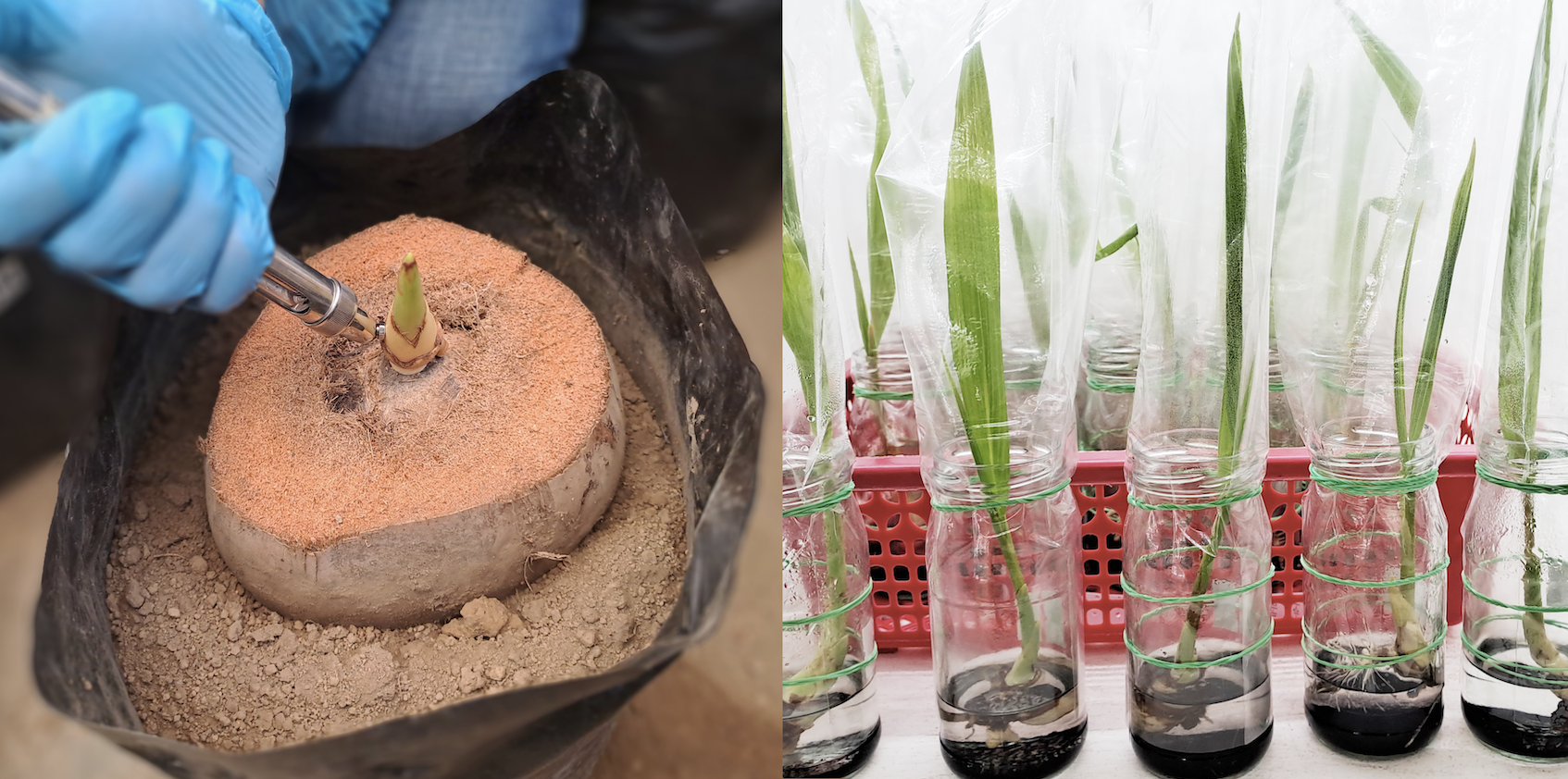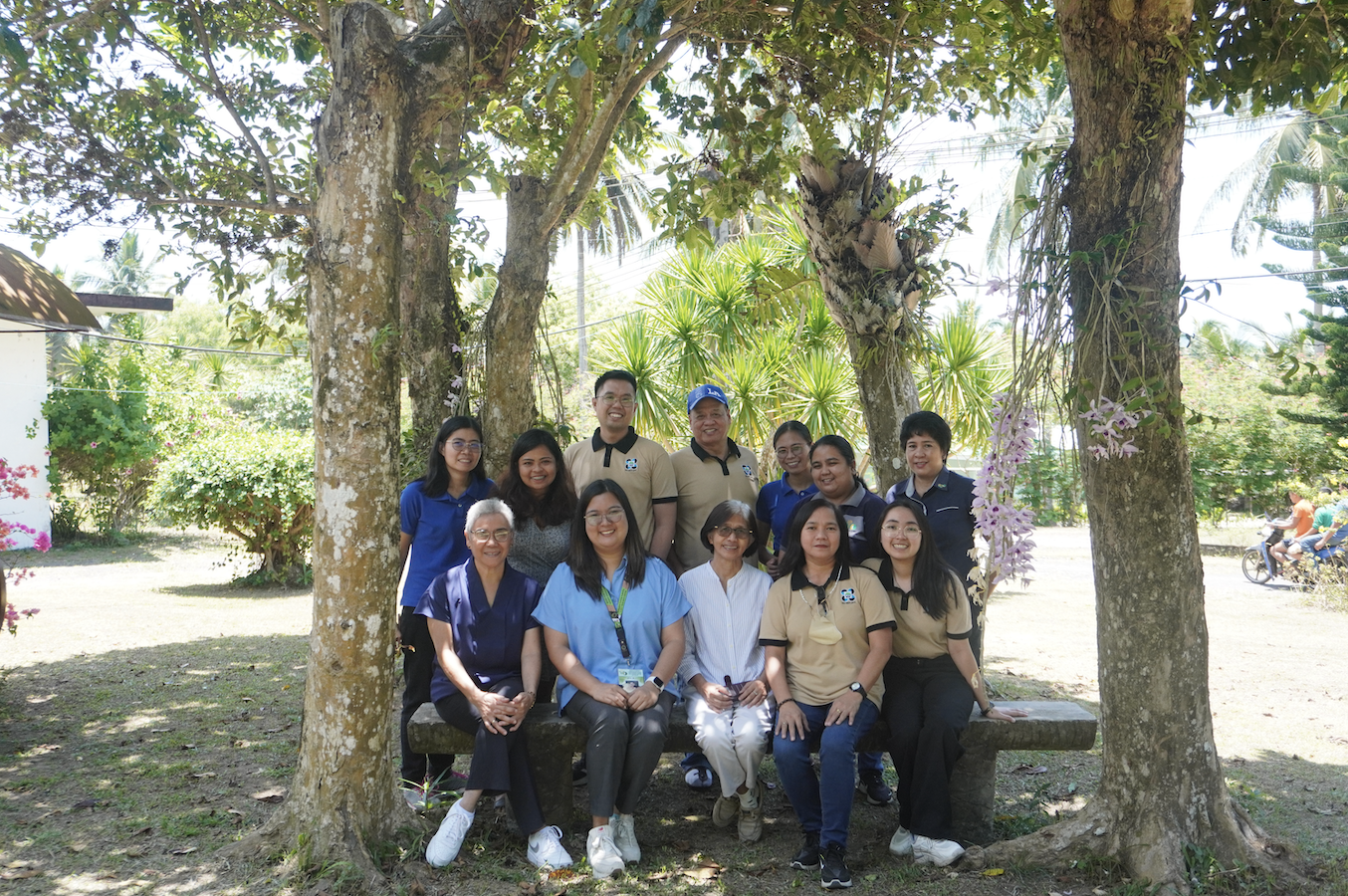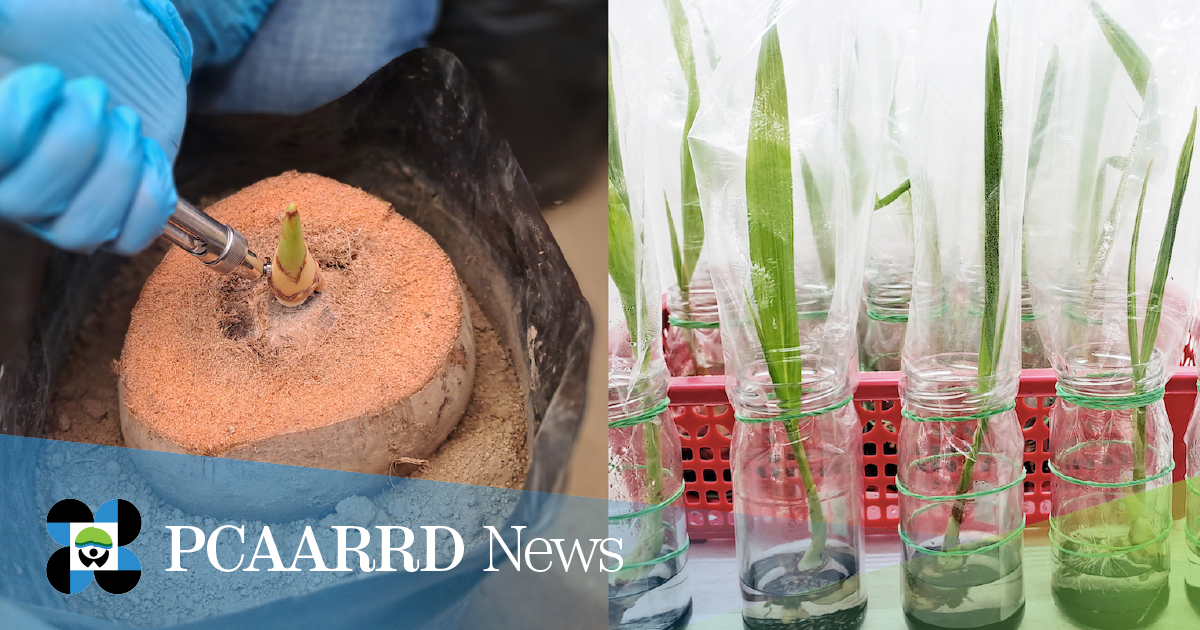A Department of Science and Technology (DOST)-funded initiative, being implemented by the Philippine Coconut Authority-Albay Research Center (PCA-ARC) to mitigate the risks of Coconut Cadang-cadang viroid disease (CCCVd), yielded promising developments in its first year of implementation.
The coconut industry is among the largest contributors to the agriculture gross value added (GVA), a major export earner, and a source of livelihood for over 2.5 million farmers. However, diseases like Cadang-cadang hamper the ability of the industry to continuously deliver its economic role.

Inoculation of LAGT nut-derived seedling (left) and LAGT embryo-cultured seedling (right). (Image credit: PCA-ARC)
A total of 691,068 Cadang-cadang infected palms were still observed in a survey conducted by PCA in 2012–2013. The study reported that with the disease spread rated at 0.1–1.0% per year, a total of 3 million coconut palms or higher, are at risk of being infected in 2032. Valued at $100 per bearing palm, the lack of intervention can result in a loss amounting to $300 million.
In a program review conducted by the Philippine Council for Agriculture, Aquatic and Natural Resources Research and Development of DOST (DOST-PCAARRD), Project Leader Maria Czet A. Fulleros reported that the project component, “Transcriptomic Analysis of Healthy and Cadang-cadang-infected Coconut Palms,'' has identified 35 candidate gene primers potentially involved in Cadang-cadang disease progression. This accomplishment will help the team determine the genes contributing to CCCVd tolerance or resistance.

DOST-PCAARRD and PCA-ARC team during the M&E visit of the DOST-funded program, “Virology and Vaccine Institute of the Philippines: Development of Mitigating Strategies for the Coconut Cadang-cadang Threat” at PCA-ARC, Guinobatan, Albay. (Image credit: CRD, DOST-PCAARRD)
Meanwhile, the project, "Application of Antisense Technology for the Coconut Cadang-cadang Disease: A Proof of Concept Study" led by Dr. Cristeta A. Cueto continues to explore antisense technology—a biotechnology tool that will be used to induce coconut resistance against CCCVd.
“The outputs of the program will aid in establishing a strong foundation for future coconut breeding initiatives and genetic analysis. This may lead to more strategic methods, including the development of quality CCCVd-tolerant/resistant coconut planting materials to mitigate the risks of the CCCVd disease, eventually boosting coconut farm productivity and farmers’ income… We at the DOST will continue to fund R&D programs that will deliver solutions to challenges encountered by the coconut industry,” said DOST Secretary Renato U. Solidum, Jr.
DOST-PCAARRD’s Crops Research Division (CRD) key personnel also conducted a monitoring and evaluation (M&E) visit at the PCA-ARC headquarters to support the team as they enter their second year of implementation. DOST-PCAARRD also assisted the team in preparing their research and development (R&D) proposals, one of which aims to complement their ongoing efforts and strengthen the advancement of knowledge on CCCVd.

